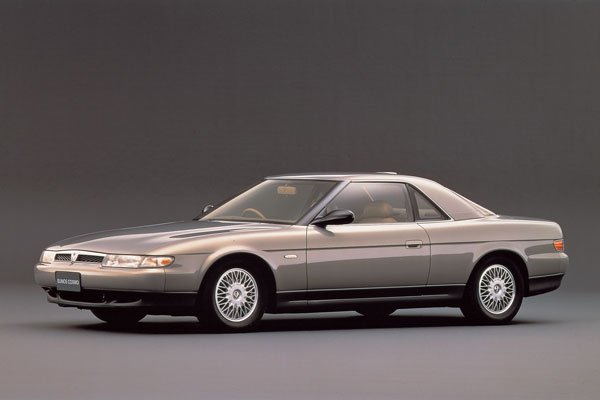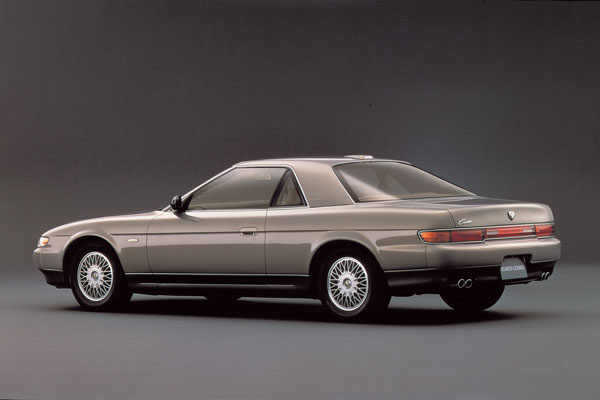Mazda Eunos Cosmo (1990-1996)
Back in 1967, Mazda unveiled the Cosmo, a quite beautiful and stylish two-door coupe complete with sweeps and curves that easily rivalled its acclaimed ‘60s European counterparts. The Cosmo also featured something rather special underneath its elegant exterior – it was the first Mazda to be powered by a two-rotor Wankel rotary engine, a type of engine design that Mazda would go on to use in many models through the years.
The Cosmo was a ‘halo’ model for Mazda – a model that announced its styling, engineering and technological abilities – and the Cosmo would go through a number of revamps over the decades, morphing from that sleek early sportscar to include a fastback version and a four-door model. In 1990 Mazda unveiled the ultimate incarnation of the Cosmo with the fourth generation marketed under the company’s Eunos luxury brand.
This was a pretty special car. Built on Mazda’s brand-new JC platform, the rear-wheel-drive Eunos Cosmo had plenty going for it. It had a sleek design that more than hinted at its performance ability, its 2 plus 2 interior was epically luxurious with pillar-to-pillar leather, and it was stuffed full of cutting-edge technology.
There were two engine options available – the 1.3-litre, sequential twin-turbo, two-rotor Wankel rotary 13B-RE that developed 175kW/295Nm; and the 2-litre, sequential twin-turbo, three-rotary Wankel rotary 20B-REW that pumped out 224kW and 403Nm. The 20B-REW variant was the world’s first series-production car with a three-rotor rotary engine. Both versions sent power through a 4-speed automatic transmission.
The 20B-REW variant, when able to stretch its legs, could sprint out to 255km/h, although it was speed-limited to 180km/h for the Japanese market.
On the inside, the cabin, though swathed as it was in luxurious materials, was not a stuffy, smoking lounge-type interior. It may have been incredibly comfortable, but there was optional technology to be found here that, more than 30 years later, would still be considered a nice touch. The Eunos Cosmo had a control system that, via a colour touchscreen, enabled control and access to a built-in GPS system (this is 1990 remember), climate control, and other infotainment features such as phone, radio and TV.
There was also a ‘Palmnet’ serial data communication system for ECU-ECAT (Electronically Controlled Automatic Transmission) operation. The engine, suspension, and air conditioning system were all electronically controlled.
The Eunos Cosmo was a luxury Grand Tourer, complete with plenty of power, top-notch engineering, quality materials and technology.
Only built for the Japanese market, not quite 9,000 units were built across the seven years of its production life. But a quality car like that doesn’t stay bound by geography for long and a number of units have found there way across the world over the years, including to Australia.
Today, it is most definitely a collectible and, perhaps surprisingly in an era when such cars can realise enormous sums at auction, a relatively affordable one – a quick flick through carsales.com.au (at the end of August) revealed three 20B-engine models available, ranging in asking price from $59,000 to $130,000. That is still quite a wedge of cash, of course, but you get plenty for your money and a real slice of automotive history too.
Source: Motor Trader e-Magazine (September 2022)
14 September 2022












